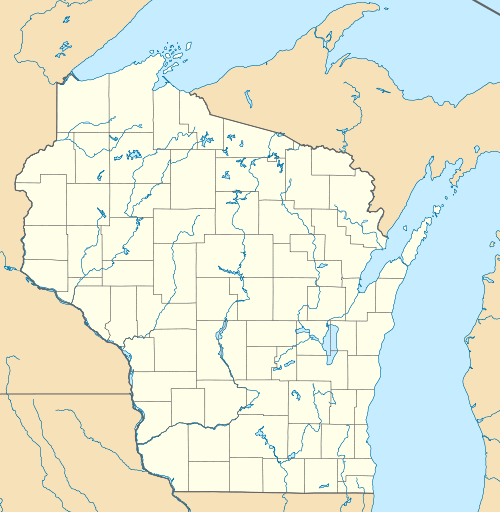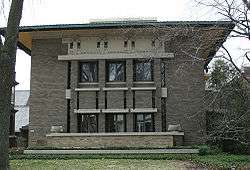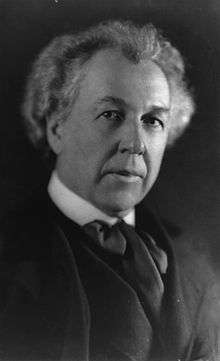Frederick C. Bogk House
|
Frederick C. Bogk House | |
 | |
 | |
| Location | Milwaukee, Wisconsin |
|---|---|
| Coordinates | 43°3′42.23″N 87°52′35.94″W / 43.0617306°N 87.8766500°WCoordinates: 43°3′42.23″N 87°52′35.94″W / 43.0617306°N 87.8766500°W |
| Built | 1917 |
| Architect | Frank Lloyd Wright |
| Architectural style | Prairie School |
| NRHP Reference # | 72000058[1] |
| Added to NRHP | October 18, 1972 |
The Frederick C. Bogk House is Frank Lloyd Wright's only single-family residential project in Milwaukee, Wisconsin. Bogk was an alderman and secretary-treasurer of the Ricketson Paint Works. This house embodies Wright's prairie style elements into a solid-looking structure that appears impregnable.
History
In the mid-1910s, developer Arthur Richards was promoting Wright. He had designed several projects for associates of Richards, but only two were built - the Munkwitz Apartments (Milwaukee, 1916), and this residence for Frederick C. Bogk. By this time, Wright's popularity was in decline, mostly due to personal troubles. The house was designed in 1916, shortly after the murder of his mistress, Mamah Borthwick, and destruction of the residential wing at his home, Taliesin, and during the same period as his Imperial Hotel in Tokyo.[2]
The house was built in 1917 at a cost of $15,000.[3] The current owners, Robert and Barbara Elsner, purchased the home in 1955.[4]
Design
The façade of the Bogk house, with its buff brick columns framing leaded art glass windows, capped by decorative cast concrete under broad eaves and a low pitched hip roof suggests the influence of the Imperial Hotel in Japan, which was under construction at the time this house was built. The sophisticated balance of horizontal and vertical lines further reflects the strong Japanese influence.
The understated entrance is located at the side of the house, opening onto the driveway. The first-floor interior is a fluid succession of rooms sprawling under a low-lying ceiling. The living room extends across the front of the house, with a dining room at the right rear of the living room, up a few steps. A bedroom above the attached garage at the rear was for the maid; this extends out of the rectangular plan of the main house. There are four bedrooms and a sitting room upstairs.
Tall, narrow leaded glass windows both frame the regular windows, and appear by themselves as design elements. Similar glass panes are embedded in interior brick walls, with lights behind. There is a tiled goldfish pond against one wall of the living room, and a plaque above it with and image of cranes. Built-in light fixtures and other decorative elements are common. There is some built-in furniture, such as desks and bookshelves. The other furniture is not original to the house, but is Wright's design. The current carpeting is a reproduction of Wright's original design.[4]

References
- ↑ "National Register of Historical Places - WISCONSIN (WI), Milwaukee County". National Park Service.
- ↑ Historic Designation Study, American System-built Homes
- ↑ Storrer, William Allin. The architecture of Frank Lloyd Wright. University Of Chicago Press, p. 200. ISBN 0-226-77621-2. Google Book Search. Retrieved on 6 May 2009.
- 1 2 Uebelherr, Jan (3 May 2009) "Their House is All Wright". Milwaukee Journal Sentinel: p.6N
- Storrer, William Allin. The Frank Lloyd Wright Companion. University Of Chicago Press, 2006, ISBN 0-226-77621-2 (S.196)
External links
- WRIGHT AND LIKE: MILWAUKEE TOUR
- Architecture Travel: Unpronounceable, Unforgettable Bogk
- Frederick C. Bogk House at the archINFORM database.
- UWM Libraries Digital Collections : Item Viewer
- Wright in Wisconsin
- Photos on Arcaid
- Bogk House on LoC
